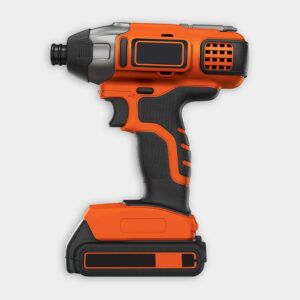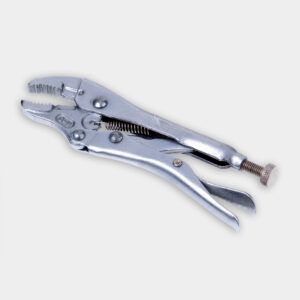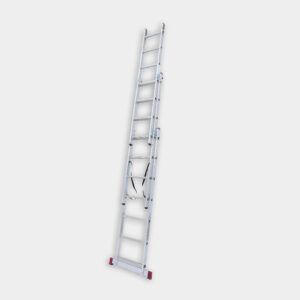Project details
Skill
Cost
Estimated Time
Installing a new garage door may seem daunting, but with the right tools and guidance, you can complete this project on your own. Our guide will walk you through the key steps to assembling and hanging a new garage door, from preparing the materials to making final adjustments. You can follow along as This Old House general contractor Tom Silva demonstrates in the video above.
Preparing for Garage Door Installation
Gathering all necessary materials and tools before starting the installation provides a smoother experience and helps you avoid unnecessary delays.
Tools and Materials Needed
To install a garage door, you’ll need the following tools and materials:
- Garage door panels
- Hinges and rollers
- Impact driver
- Ladder
- Lag screws
- Locking pliers
- Ratchet wrench
- Safety cables
- Tracks and hardware
- Weather-stripping
Safety Considerations
Installing a garage door involves working with heavy materials and potentially dangerous components. Keep these safety tips in mind:
- Be cautious when handling springs, as they are under high-tension
- Have a helper assist you with lifting heavy door panels
- Use a sturdy ladder when working at heights
- Wear protective gear, including gloves and safety glasses
Installing the Bottom Garage Door Panel
The first step in garage door installation is setting up the bottom panel. This panel is the foundation of the entire door and requires careful positioning and attachment. Install it by following these steps:
- Attaching weather-stripping: Begin by attaching the weather-stripping to the bottom edge of the garage door panel. This helps seal out drafts and moisture. Tom Silva demonstrates how to tilt the weather-stripping into place, following the contour of the door’s bottom edge.
- Securing cable brackets: Next, install the cable brackets to the bottom panel. These brackets will later connect to the lifting cables, which work with the springs to raise and lower the door. Secure the brackets with lag screws, ensuring they’re firmly attached to the door’s structure.
- Positioning the bottom panel: Once the weather-stripping and cable brackets are in place, position the bottom panel in the garage doorway. Center it carefully, leaving equal space on both sides.
Installing Garage Door Tracks and Rollers
With the bottom panel ready, it’s time to install the tracks and rollers that guide the door’s movement. Here’s what to do:
- Attaching vertical tracks: Position the vertical tracks on either side of the door opening. Insert the rollers into the tracks and secure them to the doorway frame using lag screws. Leave the screws slightly loose to allow for adjustments later.
- Aligning tracks: Carefully align the tracks so they’re parallel with the door edges. This step leads to smooth operation. Silva demonstrates how to eyeball the spacing and make necessary adjustments before tightening the lag screws fully.
- Installing rollers: Insert rollers into the brackets attached to the door panel. These rollers will fit into the tracks, allowing the door to move smoothly up and down. Check that all rollers are properly seated in their brackets and tracks.
Adding Subsequent Garage Door Panels
Now that the bottom panel and tracks are in place, you can add the remaining door panels by doing the following:
- Installing middle panels: Lift the second panel into place, setting it on top of the bottom panel. Align the panel edges and secure them together using the pre-installed hinges. Insert rollers into the tracks as you go, ensuring each panel is properly connected to the track system.
- Attaching the top panel: The top panel requires special attention, as it connects to the spring system. Install this panel after the horizontal tracks are in place. Secure it to the panel below and attach the top roller brackets, which may need adjustment to achieve proper door alignment.
- Installing the springs: Carefully install the garage door springs according to the manufacturer’s instructions. Tom Silva shows how to hook the spring onto the door track bracket. These springs are under high tension and can be dangerous if mishandled.
- Attaching cables: Connect the lifting cables to the bottom brackets and run them over the pulleys at the end of the tracks. Secure the cable ends to the appropriate brackets, ensuring they’re properly tensioned.
- Safety cable installation: For added safety, install a safety cable through the center of each spring. This cable helps contain the spring in case it breaks, preventing potential injury. Attach the safety cable to brackets at both ends of the spring.
Making Final Adjustments
After all components are installed, make final adjustments for smooth and safe operation. Follow these steps:
- Balancing the door: Test the door’s balance by manually lifting it to various positions. A properly balanced door should stay in place when released halfway open. If it doesn’t, adjust the spring tension accordingly.
- Checking alignment: Verify the door moves smoothly along the tracks without binding or rubbing. Make any necessary adjustments to the track alignment or roller positions for proper operation.
- Testing safety features: Finally, test all safety features, including the automatic reverse mechanism if you have an electric opener. Check that the door stops and reverses when it encounters an obstacle.
Our Conclusion
Installing a garage door is a manageable do-it-yourself (DIY) project that improves your home’s functionality and appearance. While it requires careful attention to detail and some heavy lifting, following these steps will help you successfully install your new garage door. Prioritize safety throughout the process, and don’t hesitate to seek professional help if you encounter any difficulties.
Video Transcript
TOM:
This is the bottom panel. To get started, I want to start installing hinges in the middle of each section. This will allow the door to turn in the track. On the end of the door, a hinge goes at each section and then we drop this roller into that to keep the door in the track. On the bottom is a bracket that we attach the cable to that goes up to the spring to help lift the door up and down. We also insert another roller in that to keep the bottom of the door in the track.
Now the weatherstripping fits right on the bottom of the door like this. We just tilt it right into place. It’ll follow the contour of that rabbit. Tap it up. To fasten it to the door, we take our bracket and lay it on top of the weatherstripping. Then I’ll screw through the bracket, through the weatherstripping, into the door. I’m going to use these coarse thread lag screws.
DENNIS:
You’re not screwing into the form, are you?
TOM:
No, there’s actually a piece of wood that runs right up the end of the door that gives us some structure to screw into. Now we’ll take the panel and put it on the floor against the opening and then we’ll center it in the opening. Okay, right about there. Now I’ll take one of the wheels, put it in the bracket, one in the hinge. Now I’ll take the track, just wrap it right around the two wheels. A little bit of space between the track and the door. Now I want to lag screw the track to the frame. I’m not going to screw the lag screws in too tight in case we need to adjust the track later.
Okay, Dennis, let’s do your side now.
In the center of the door, I’m actually using a different lag screw. It’s a machine thread. Instead of a wood backer in the center of the door, there’s actually a piece of metal. All right, we’re ready for the next panel.
Now what I want you to do is walk towards the stairs because I’m going to turn the door into the track. Okay, now walk the door into place. Now we drop it down on top of the first panel. Now I want to make sure that the two panels are flush in the end, which they are. Now I’ve pre-drilled a hole right here for my lag screw so when I tighten the lag screw, it will pull the door right into place.
Now on this end of the door, I didn’t put the hinge or the roller on. The reason for that is we wouldn’t be able to get the door into the opening. So now we can just roll it into the track and position it and screw it on. Now I want to make the track parallel with the edge of the door. And to do that, I’m going to eyeball it so the space is equal. Tighten up my lag screw. And I’m going to put one up at the top.
With this nut loose right here, I can slide the track in or out. So I push it in a little bit and I pull it out just a hair. I don’t want it to touch it because I don’t want to create any friction when the door opens and closes. Move up to the next one. Pull the door out a little so I have a little bit of a space. Tighten it up and do the top. Now we’re going to make the transition between the vertical track and the horizontal track. And to do that, we’re simply going to screw it in place. Okay.
Okay, you got it there?
DENNIS:
Okay, good.
TOM:
All right, Dennis, you’re ready to put the last panel in?
DENNIS:
Definitely.
TOM:
Now we couldn’t put this last panel in until after we installed the horizontal track because we didn’t want the door to fall in on us. Okay, line it up and I’ll screw this hinge on. Hold it there now. You got it?
DENNIS:
Yep.
TOM:
Okay. Okay, now I’m going to put the top wheel on. Slide it into the track and bring it down so it just has a little bit of tension on it. Bring it up a hair. Screw it in place.
All right, we’re ready for the last roller.
Now we’re ready to install the spring. So install it up there on that hook, Dennis.
The spring is actually the muscle that actually helps pick the door up. Now before we can attach the springs, we have to physically pick the door up.
Are you ready?
DENNIS:
Ready.
TOM:
On three. One, two, three. Okay, now to keep the door from coming down, I’m going to take my vice grips, lock it to the track. Okay, with it down easy. Beautiful. All right, with our door up, we now have access to the bottom panel and that’s the bracket on the bottom corner where we will attach the cable.
TOM:
Now the cable gets attached to that bottom bracket, goes up over the pulley. Okay, let me know when you have it there?
DENNIS:
Yep.
TOM:
All right, now I’m going to take my end of the cable and put it through the pulley on the spring. Tighten it up a little bit and then I’m going to take the end of the cable now and put it through this little bracket. Go through it this way, down through this way. Take a little bit of slack up and put it through that loop. Okay, now I’ll take an S-hook, hook it on the bracket. Now we install the S-hook to the track. Great.
With the door closed, there’s an awful lot of tension on this spring and if the cable of the spring should break, it could fly away. And to keep it from flying away and getting anybody hurt, you have to put a safety cable through the center of the spring and attach it to the bracket. Okay.
All right, Dennis, let’s check the tension on the springs. Well, that feels good. It’s nice and easy.




